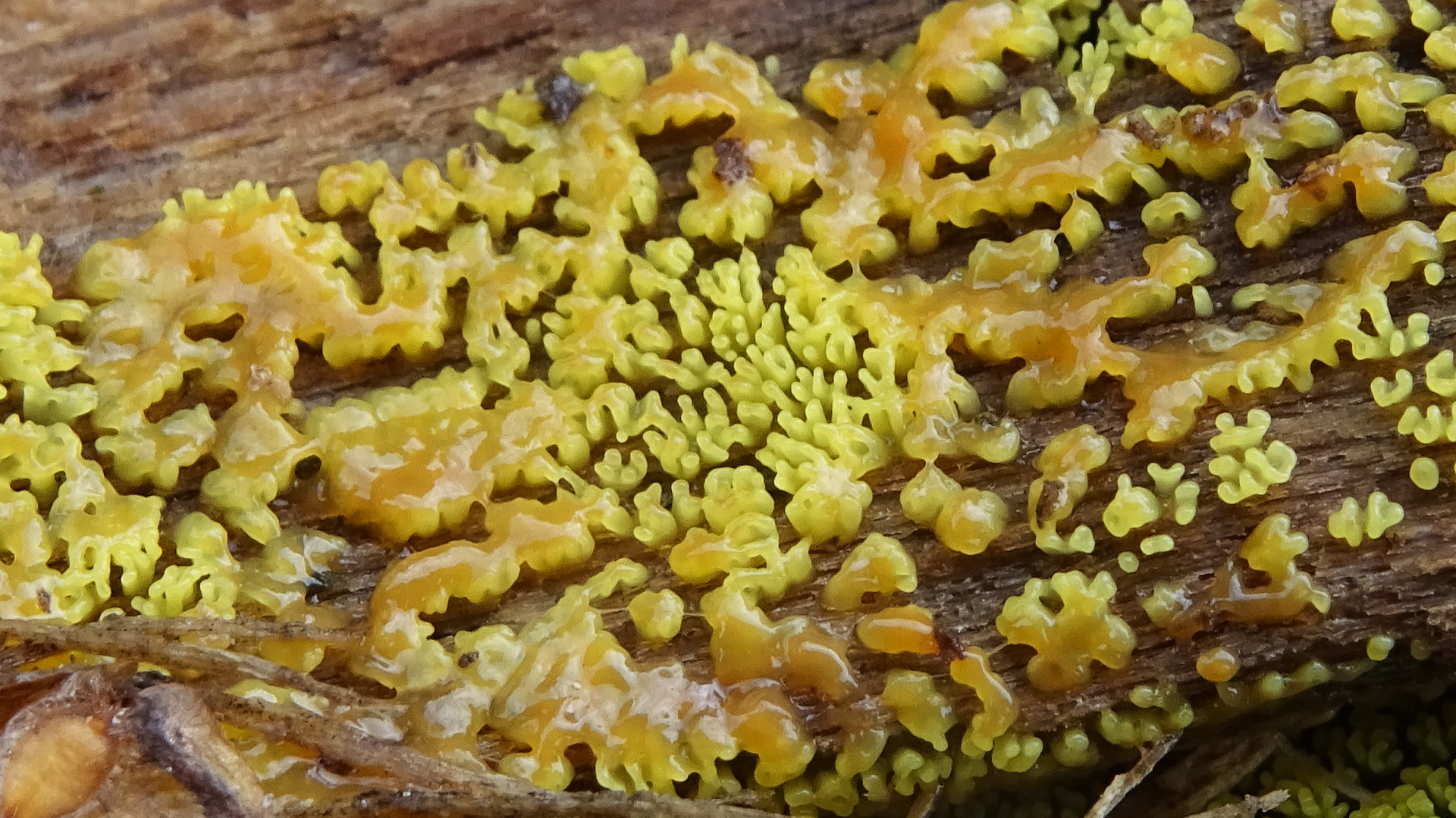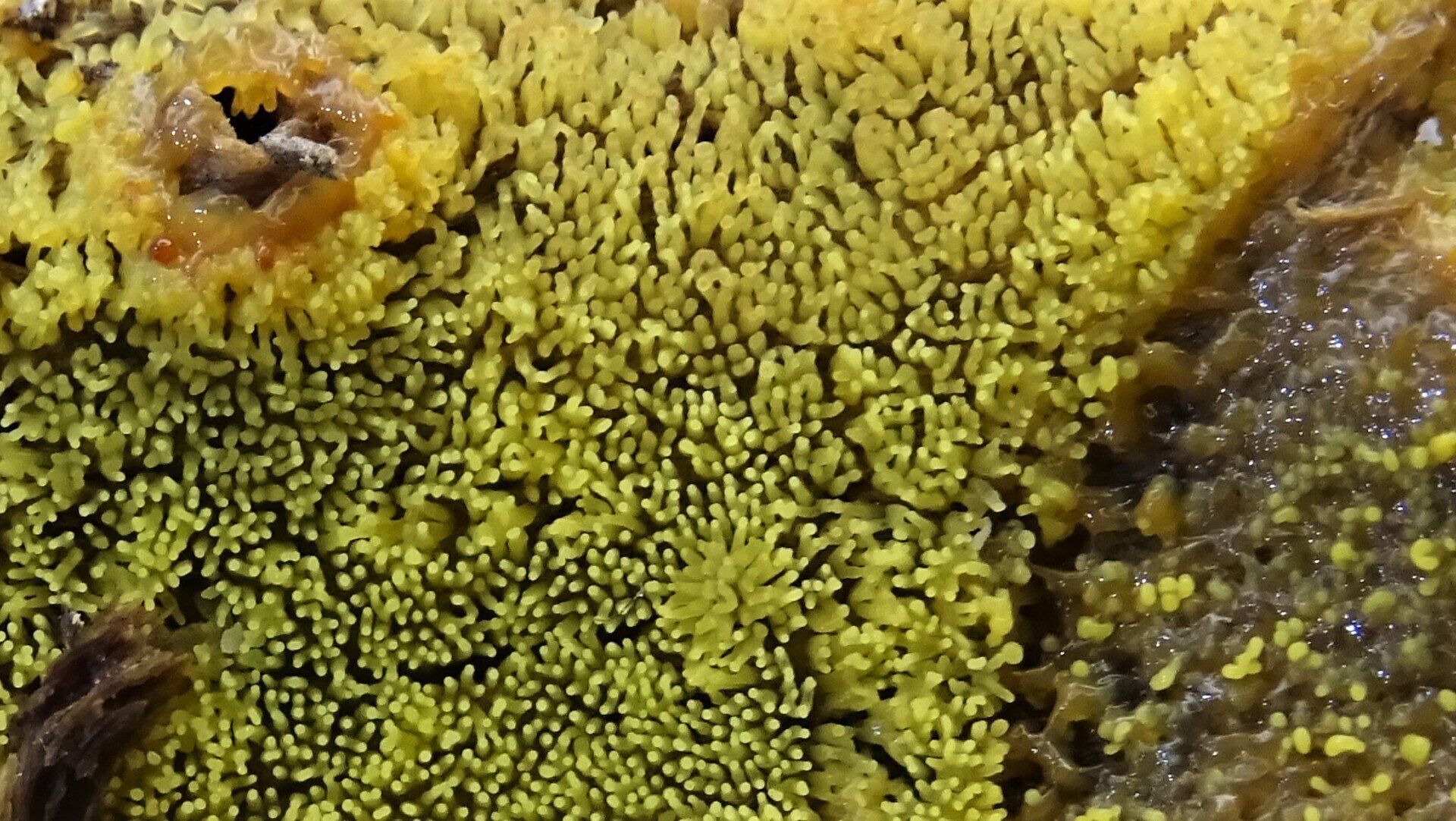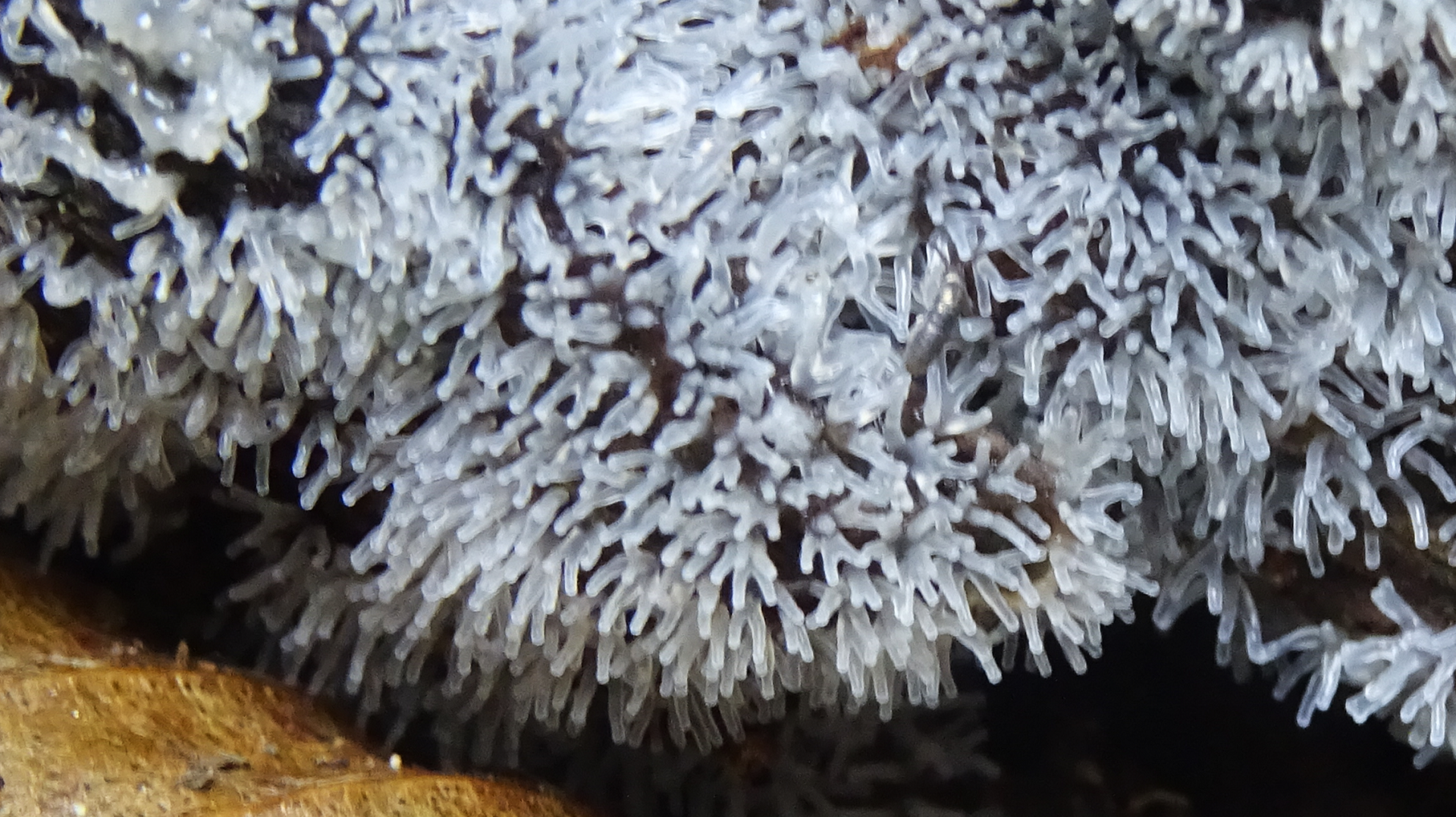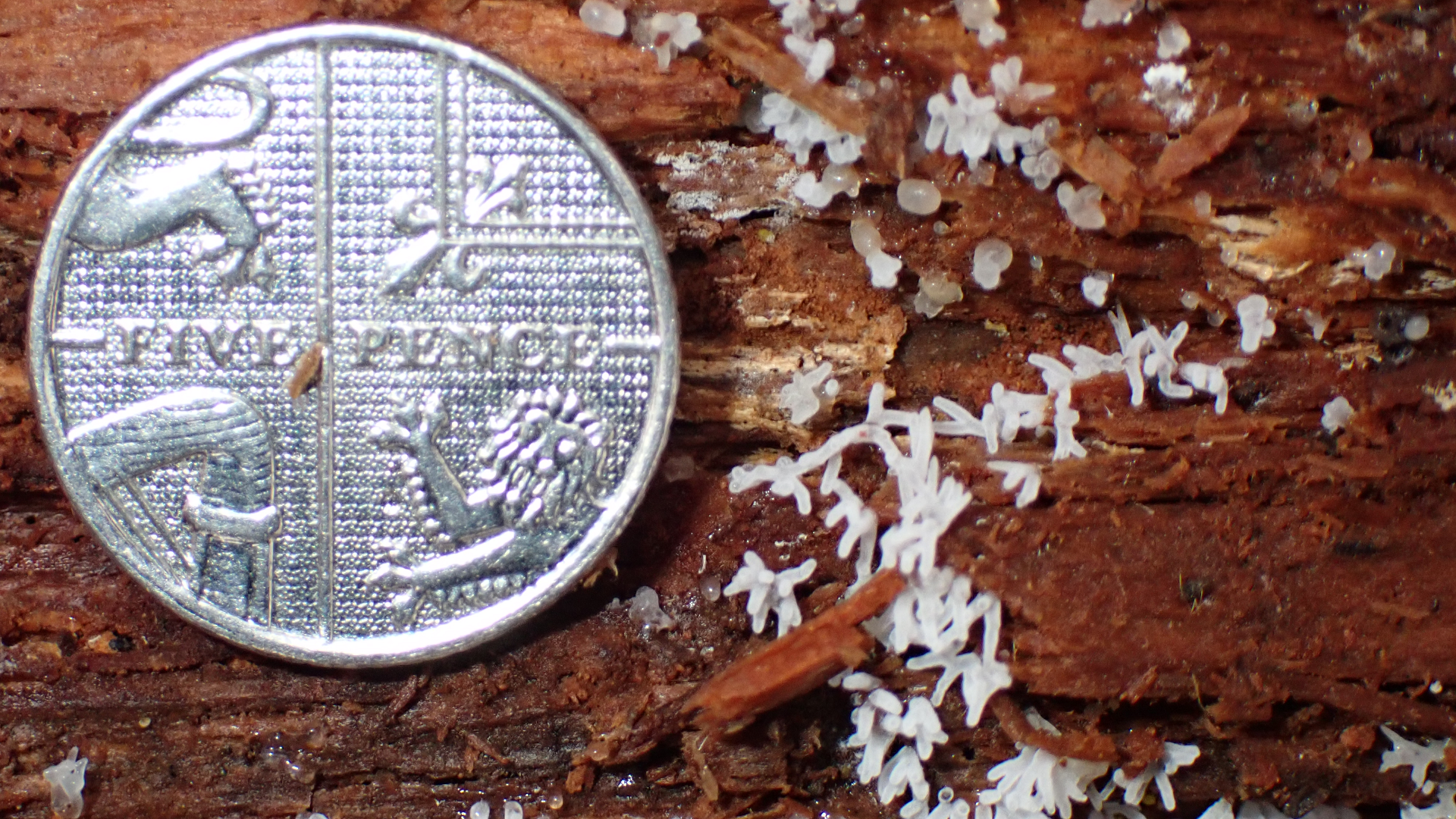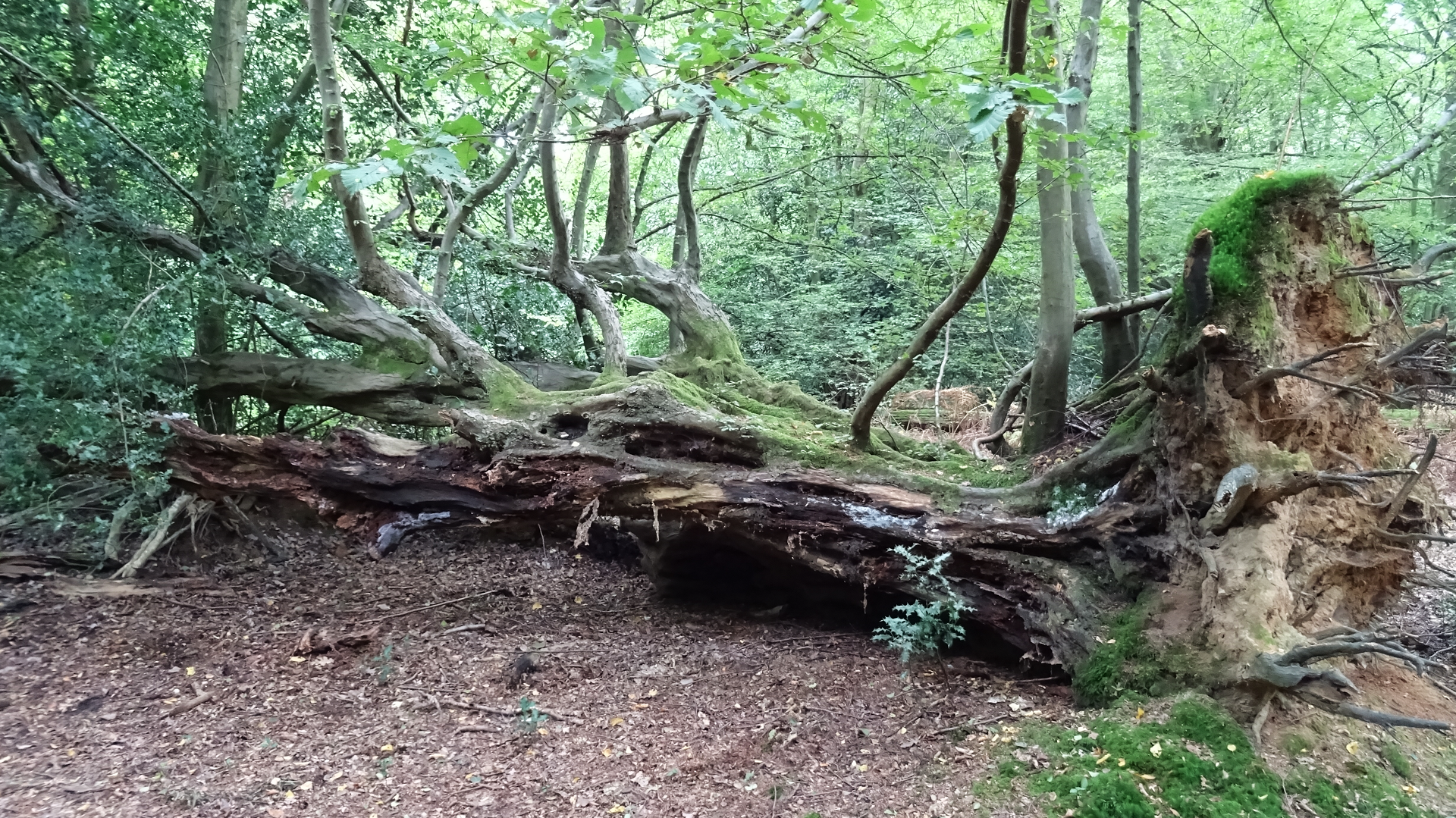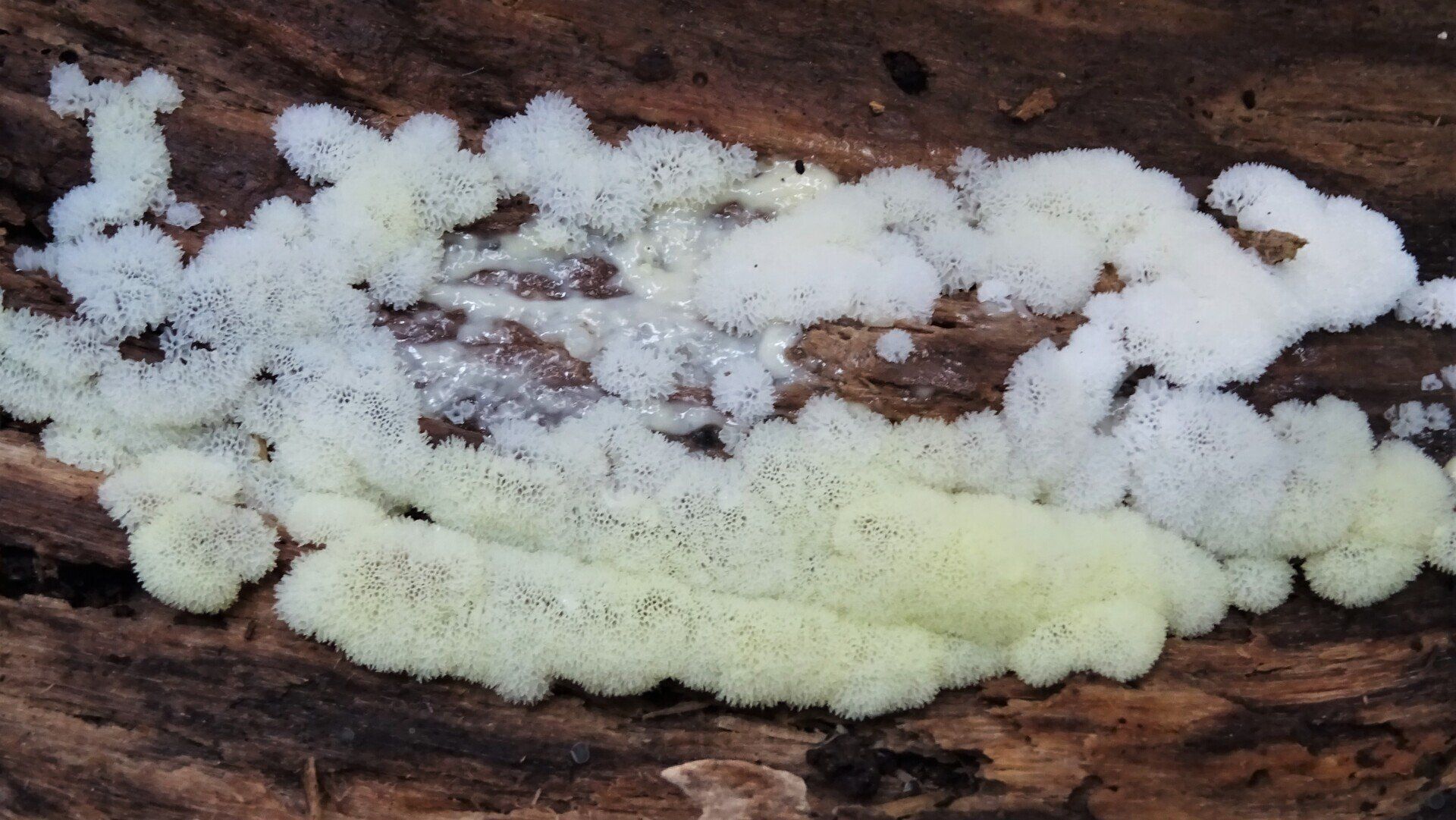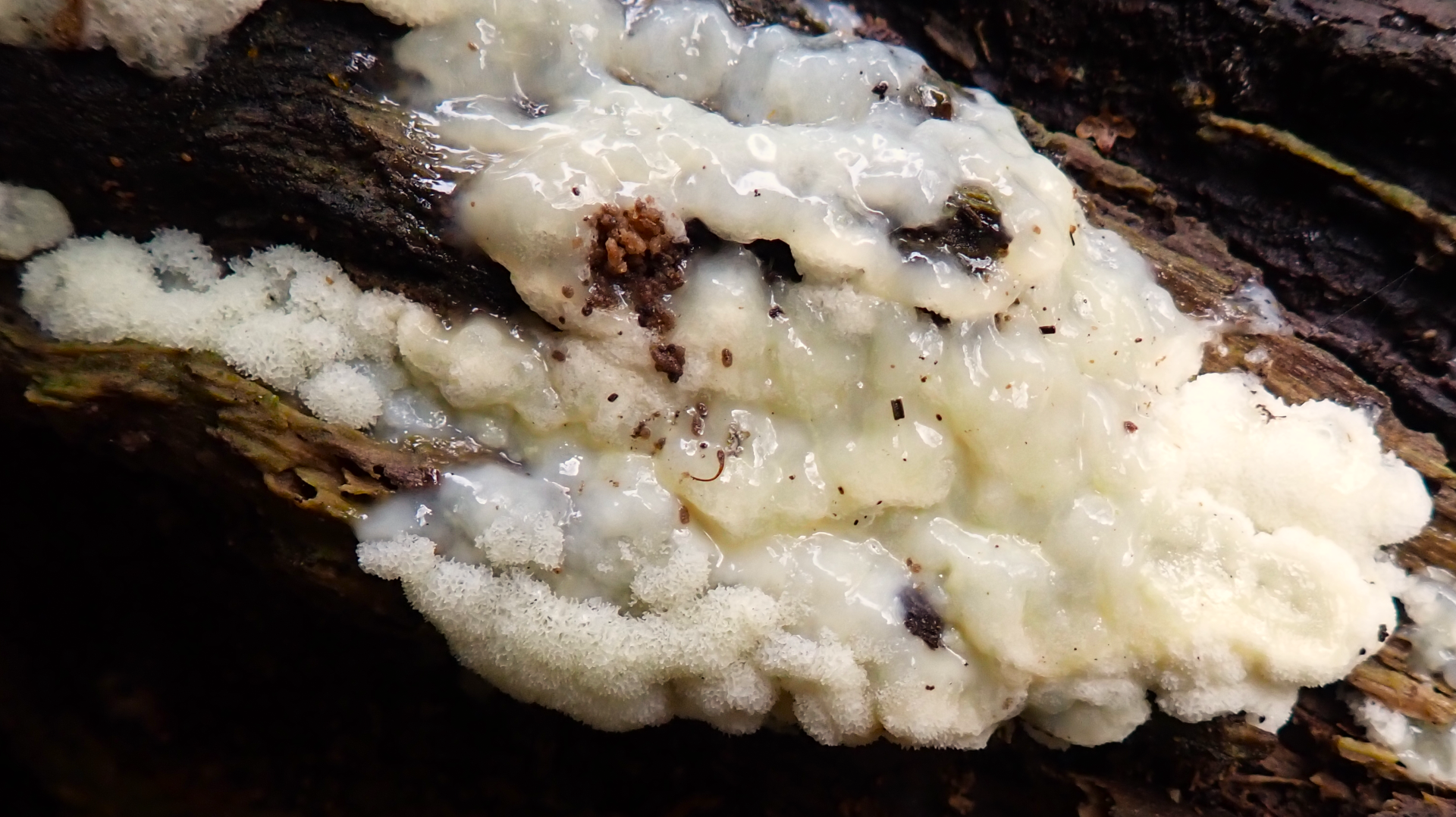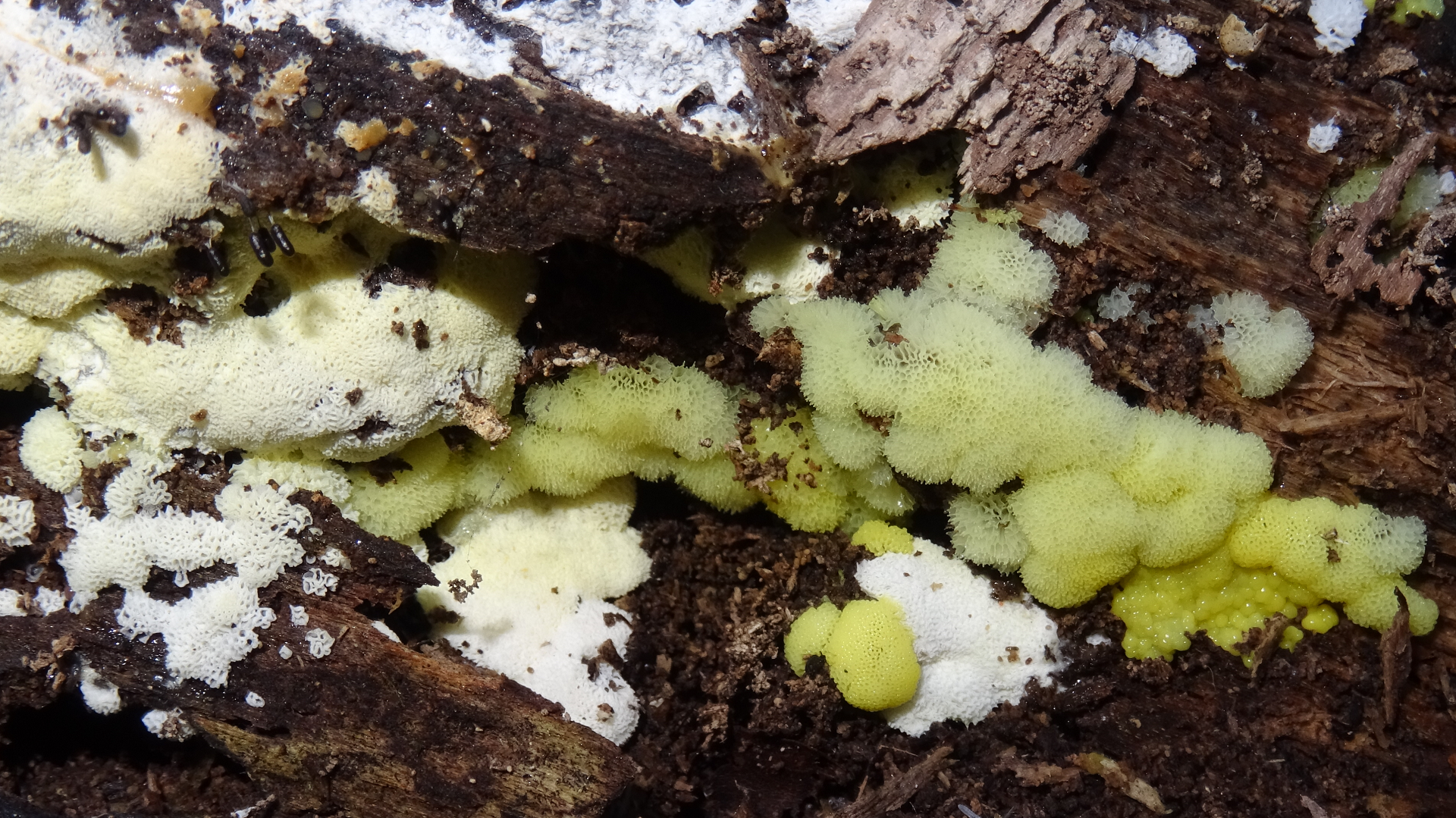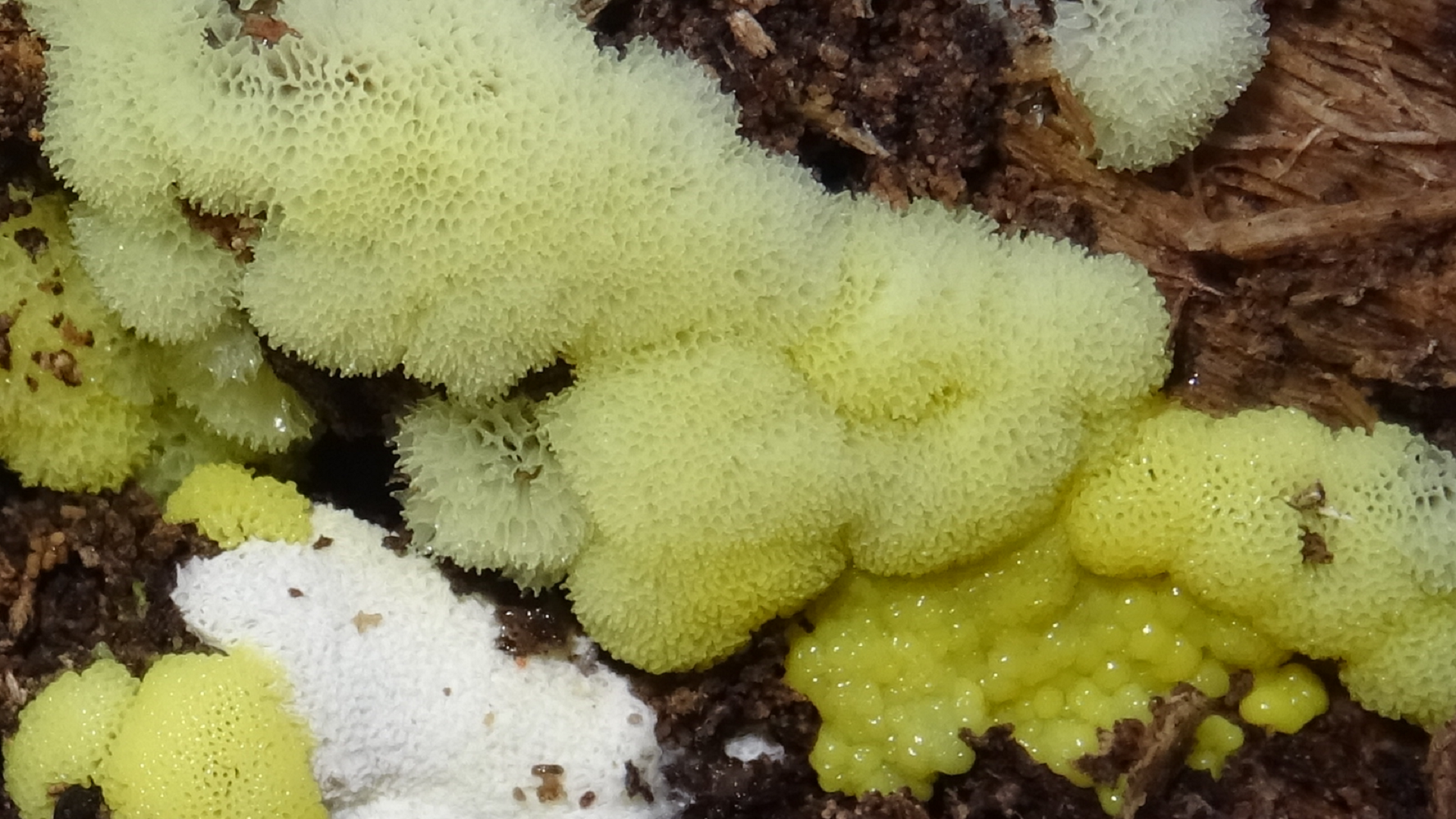SLIME MOULDS
CERATIOMYXACEAE
Ceratiomyxa species are different from other slime moulds because their spores grow on the external surfaces of the fruit body.
Coral Slime Mould Ceratiomyxa fruticulosa is fairly common in Hainault Forest, normally appearing after damp weather, in white and yellow forms. When mature the fruit bodies remain soft and watery. They can cover large areas of fallen trunks, branches and stumps, growing up to 4mm tall.
Honeycomb Slime Mould Ceratiomyxa porioides is a recent arrival to Britain from the Mediterranean, possibly the result of climate change. It can be mistaken for a resupinate fungus, however it is much softer and easily breaks up when touched. The first Essex record was discovered by Raymond Small growing on a fallen silver birch in Hainault Forest on 24th September 2021, confirmed by Professor Bruce Ing. Only three UK records existed in 2020, but there has been a significant increase in authenticated sightings since.
© hainaultforest.net. All rights reserved.


